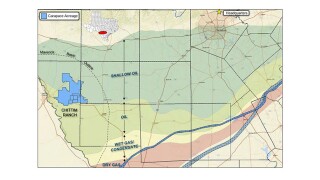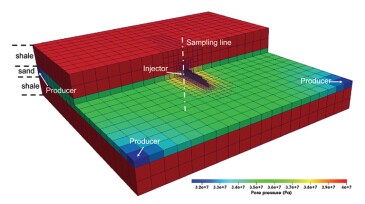Enhanced recovery
The objective of this microfluidic investigation is to identify and test two novel applications for magnetic fluids in porous media for subsurface oilfield applications.
This paper explains that the discovery of specific pressure trends, combined with an unconventional approach for analyzing gas compositional data, enables the detection and prediction of paraffin deposition at pad level and in the gathering system.
This paper describes a study to design and implement an enhanced oil recovery project via huff ’n’ puff using Y-grade injectant.
-
This paper describes how a better understanding of the connection between the well and the reservoir through use of fiber-optic sensors can improve reservoir simulation models, decision-making, and well-performance evaluation.
-
In this study, the application of electrical resistance heating on multilateral wells is studied to illustrate the enhanced physical and economic benefits of the method.
-
This paper introduces methods to fully couple reservoir simulation with wellbore flow models in fractured injection wells.
-
The paper presents a model for shale gas production in which CO2 is injected by huff ’n’ puff into a hydraulic fracture surrounded by a shale matrix.
-
Statistics are important in knowing where the sharp minds of SPE members are investing their energies. Typically, this is also in proportion to what those members need. Hence, it is noteworthy that more than a fifth of the papers were about CO2-based EOR, indicating not only renewed interest but also the motivation for carbon capture, use, and storage.
-
This study explores pitfalls experienced when using capacitance/resistance modeling as a plug-and-play technique for waterflood optimization and discusses workarounds and mitigations to improve its reliability.
-
As the discovery rate of new hydrocarbon resources decreases, the need for more-efficient enhanced-oil-recovery processes increases. Unlike in the past, however, when the efficiency was defined in terms of maximizing the recovery factor (RF), the new interpretation of efficiency is based on optimizing the balance between RF and the reduction of carbon footprint.
-
This paper reveals the potential of an in-situ generated gel system designed with a bionanoparticle that has tunable strength and gelation reversibility in porous media for underground applications.
-
In this study, the authors show that high-temperature, high-salinity polymers can exhibit low adsorption and retention in carbonate reservoir rock at ultrahigh salinity conditions.
-
In this paper, a complete safety-management approach and a contingency plan are developed for carbon dioxide waterless fracturing operations.













